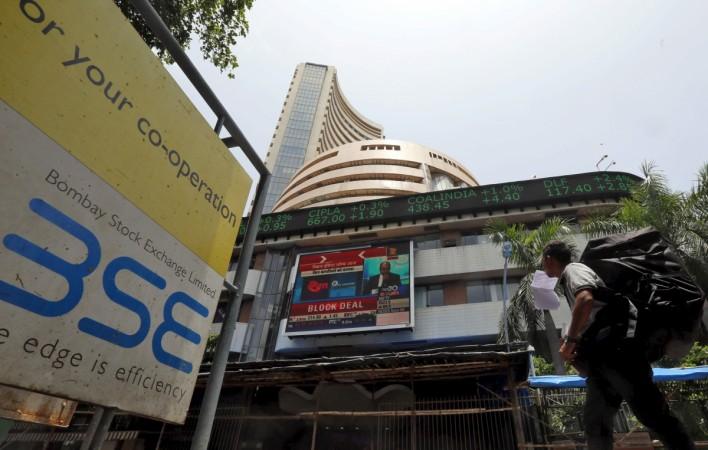
Update: 3.30 p.m. IST — The Sensex ended the day at 26,396 while the NSE closed 2 points lower at 8,109. JP Associates ended up as the top gainer and closed at Rs. 7.94, while Bhushan Steel ended the day at Rs. 40.65, up 11.52 percent.
Update: 2.38 p.m. IST — The Sensex was trading at 26,318, down 78 points, at around 2.38 p.m. Bhushan Steel was up 11.93 percent at Rs. 40.80. JP Associates was up 14.70 percent at Rs. 7.88, while Alok Industries had gained 11.59 percent and trading at Rs. 4.14.
Original story
Bhushan Steel shares rose sharply on the Bombay Stock Exchange (BSE) on Tuesday in response to the Reserve Bank of India (RBI) announcing a slew of changes for restructuring stressed loans on Monday.
The Bhushan Steel stock gained almost 20 percent from its Monday close in early morning session and was trading at Rs. 41.85 apiece at around 11.40 a.m., up 13.85 percent.
Shares of JP Associates, Alok Industries and Unitech were also trading with gains of more than 10 percent on the BSE. JP Associates shares were up 11.79 percent at Rs. 7.68 at around 11.45 a.m.
The news also resulted in share prices of State Bank of India and ICICI Bank — the country's top two lenders — rallying on the BSE.
Bhushan Steel is among those borrowers that have huge bank debt; the steel maker's total loan at Rs. 40,000 crore, Mint reported in April this year.
The new guidelines apply to cases wherein the cumulative loan amount is more than Rs. 500 crore (including rupee loans, foreign currency loans/external commercial borrowings), the project has started operations and the debt level is "sustainable".
Loans that can't be assessed as repayable (Part B) can be converted into equity by the lenders into equity/redeemable cumulative optionally convertible preference shares, subject to ownership change.
"However, in cases where the resolution plan does not involve change in promoter, banks may, at their discretion, also convert a portion of Part B into optionally convertible debentures. All such instruments will continue to be referred to as Part B instruments in this circular for ease of reference," the RBI said in the guidelines.
Purpose of the new guidelines
The new guidelines are aimed to "strengthen the lenders' ability to deal with stressed assets and to put real assets back on track by providing an avenue for reworking the financial structure of entities facing genuine difficulties"
Who all are eligible?
- Projects that have commenced commercial operations
- The aggregate loan amount (including accrued interest) to all banks is more than Rs. 500 crore (including rupee loans, foreign currency loans/external commercial borrowings) and
- The debt/loan meets the test of "sustainability"
What is "sustainable" debt?
A debt level will be deemed sustainable if the Joint Lenders Forum (JLF)/Consortium of lenders/bank conclude through independent techno-economic viability (TEV) that debt of that principal value amongst the current funded/non-funded liabilities owed to institutional lenders can be serviced over the same tenor as that of the existing facilities even if the future cash flows remain at their current level. For this scheme to apply, sustainable debt should not be less than 50 percent of current funded liabilities.
The restructuring plan
- Determine the level of debt (including new funding required to be sanctioned within next six months and non-funded credit facilities crystallising within next 6 months) that can be serviced (both interest and principal) within the respective residual maturities of existing debt, from all sources. The level of debt so determined will be referred to as Part A.
- The difference between the aggregate current outstanding debt, from all sources, and Part A will be referred to as Part B.
- There shall be no fresh moratorium granted on interest or principal repayment for servicing of Part A or extension of the repayment schedule or reduction in the interest rate for servicing of Part A.
- Part B shall be converted into equity/redeemable cumulative optionally convertible preference shares. However, in cases where the resolution plan does not involve change in promoter, banks may, at their discretion, also convert a portion of Part B into optionally convertible debentures. All such instruments will continue to be referred to as Part B instruments in this circular for ease of reference.
Valuation of equity
The equity shares (of listed borrowers) in the bank's portfolio should be marked to market preferably on a daily basis, but at least on a weekly basis. For shares of unlisted companies, a new set of norms to value the equity.

















